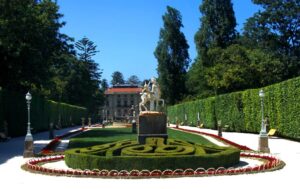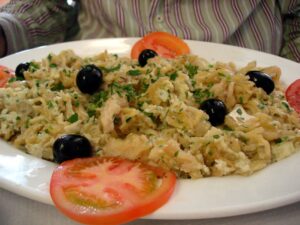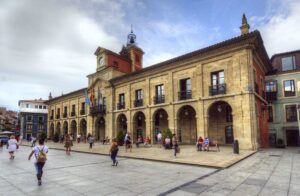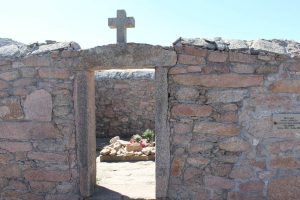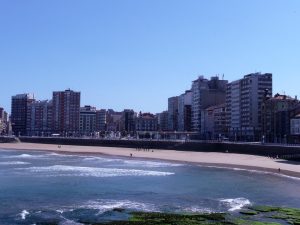
The Camino de Santiago is one of the most iconic and spiritual routes in the world, attracting thousands of pilgrims from different nationalities each year. Whether for religious, cultural, or personal reasons, it has become a benchmark destination for those seeking a unique experience of connection with themselves, with nature, and with history.
However, this rise in popularity has brought some challenges, such as overcrowding in the hostels, especially in the most popular sections and during peak seasons. The crowds can detract from the peacefulness of the experience, make resting more difficult, and in some cases, create stress rather than the calm that many seek.
In this article, we offer practical tips and effective solutions to avoid overcrowding in the hostels and experience the Camino de Santiago in a peaceful and organised manner. We will help you optimise every moment of this unforgettable adventure.
Índice de contenidos
Why do overcrowdings occur in the hostels of the Camino de Santiago?
Overcrowding in the hostels is a reality that can affect many pilgrims, especially during certain times of the year and on heavily trafficked routes. These concentrations of people are usually influenced by several factors that are important to understand in order to avoid them.
Peak seasons: spring, summer, and religious holidays
Both spring and summer are the most popular times to walk the Camino de Santiago due to the favourable weather and school and work holidays. During these months, the more well-known routes, such as the Camino Francés or the Camino Portugués, are often packed with pilgrims, significantly increasing the demand for hostel spaces.
In addition, religious holidays, such as Holy Week and Saint James’ Day (25th July), also draw large crowds, further complicating the availability of accommodation.
Main affected routes
The most affected routes by overcrowding include the most popular and well-known ones, such as the Camino Francés and the Camino Portugués. These routes not only have a high number of pilgrims throughout the year, but they also concentrate a large part of the hostel infrastructure.
In contrast, there are less crowded alternatives. For example, the various stages of the Camino Primitivo often offer a more peaceful experience as they pass through mountainous landscapes with fewer pilgrims.
Factors that increase overcrowding
There are several factors that contribute to the overcrowding problem in the hostels of the Camino de Santiago:
- Popular stages: There are sections of the Camino that have become especially famous due to their natural beauty or because they are traditional starting points, such as Sarria on the Camino Francés. These stages are often very crowded, especially in the final stretch towards Santiago.
- Local festivals: Festivals in the regions the Camino crosses, such as the celebrations of Saint James, attract both pilgrims and tourists, which increases the demand for accommodation.
- Sections with less infrastructure: Some areas of the Camino, such as parts of the route towards Muxía or the Camino del Norte, have fewer available hostels. This can lead to a higher concentration of pilgrims in the few existing accommodations.
- Choosing lesser-known routes: While routes such as the Camino Inglés are less busy, their hostel infrastructure can be limited compared to more popular paths. Therefore, it is important to consult a guide for the Camino Inglés to plan your stages and ensure you can find accommodation.
Tips to avoid overcrowding in the hostels of the Camino de Santiago

Enjoying the Camino de Santiago without the hassle of overcrowding in the hostels is possible with good planning and proper strategies. Below, we offer some tips for the Camino de Santiago that will help you optimise your experience and avoid any issues.
Plan in advance
Planning is key to ensuring a peaceful experience, especially during peak seasons.
- Book private hostels or alternative accommodations: although public hostels are usually more affordable, their availability is limited. Booking in advance at private hostels, inns, or rural houses can be an excellent option to secure your rest.
- Use reservation platforms specifically for pilgrims: there are tools such as apps and websites dedicated to the Camino that make booking accommodations easier. If you’re following a less travelled route, such as the Camino Inglés, you can rely on good planning for the Camino Inglés to identify available accommodations at each stage.
Choose less crowded routes
Opting for less crowded paths is an effective way to avoid the masses. Although routes like the Camino Francés are the most popular, there are alternatives that offer greater tranquillity:
- The Camino Primitivo: this route, known for its natural beauty and physical challenge, has fewer pilgrims and is ideal for those seeking a more intimate and peaceful experience.
- The Camino del Norte: with its spectacular views of the Cantabrian Sea, this route is less crowded but equally enriching.
- The Camino Inglés: this short and peaceful route combines history and unique landscapes, and can be a great option for those who prefer to avoid more crowded paths.
Avoid the busiest times and stages
Even on the most popular routes, there are ways to avoid overcrowding if you adjust your timings and how you divide the stages:
- Leave early: starting your walk at dawn will allow you to reach the hostels before they fill up. This habit not only guarantees your accommodation, but it also lets you enjoy cooler temperatures during the summer.
- Split long stages or start from intermediate points: instead of following the traditional stages, consider adapting the route to your needs. For example, you might choose to stay in less frequented villages instead of the more popular destinations at the end of the standard stages.
Rely on the help of specialised companies like Mundiplus

Another excellent strategy to avoid overcrowding and improve your experience on the Camino de Santiago is to rely on the assistance of a specialised pilgrim support company. A great example of this is Mundiplus, specialists in organising the Camino from O Cebreiro. What do they offer?
- Personalised advice: companies like this offer personalised advice to help plan your route, taking into account your preferences and specific needs. This allows you to design an itinerary that avoids the most crowded areas and makes the most of the less travelled routes.
- Accommodation reservations and management: they can take care of reservations, ensuring your stay in comfortable and well-located places, even during peak seasons.
- Continuous support: during your journey, you’ll have constant support to resolve any unforeseen circumstances, from changes in your plan to assistance in emergencies.
- Additional services: some companies offer supplementary services such as luggage transport and expert guides, enriching your knowledge of the history and culture of the Camino.
Benefits of choosing an organised tour on the Camino de Santiago
This option is becoming increasingly popular among pilgrims who seek comfort, tranquillity, and an experience tailored to their needs.
- One of the biggest inconveniences of the Camino, especially during peak seasons, is the availability of accommodation. These companies solve this problem by guaranteeing reservations in comfortable and well-located accommodations. This allows you to walk each stage without the stress of arriving early to find a place in a hostel, ensuring a spot to rest at the end of the day.
- Another great advantage is the ability to personalise your Camino according to your needs and preferences. This flexibility allows each pilgrim to experience the journey in their own way, adjusting to their physical level, available time, and travel style.
Additionally, the places where you’ll stay offer greater comfort, which is essential in such a challenging adventure.

